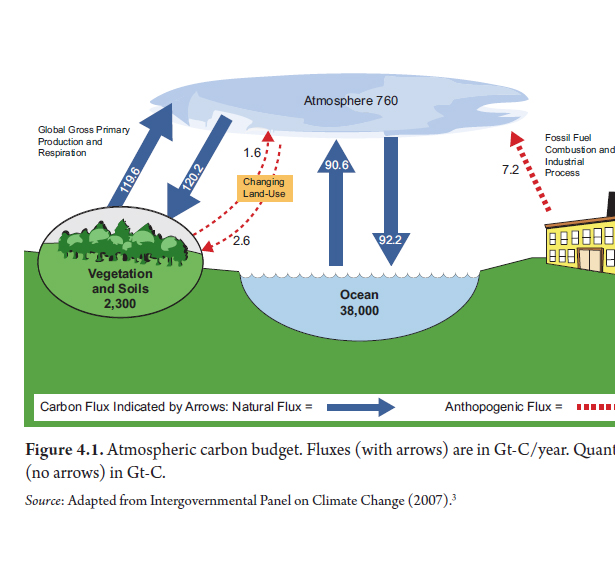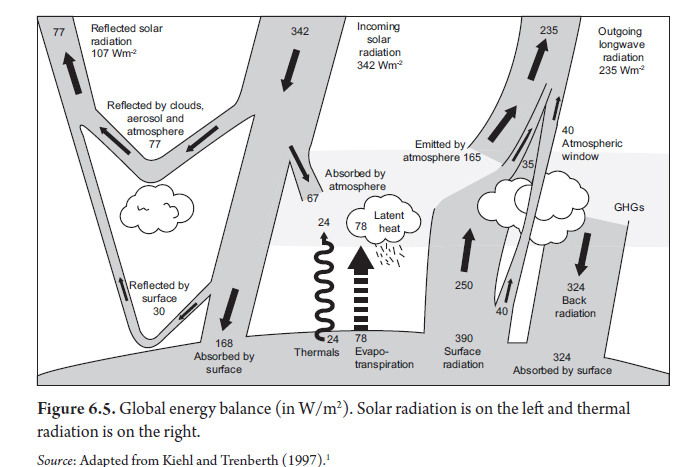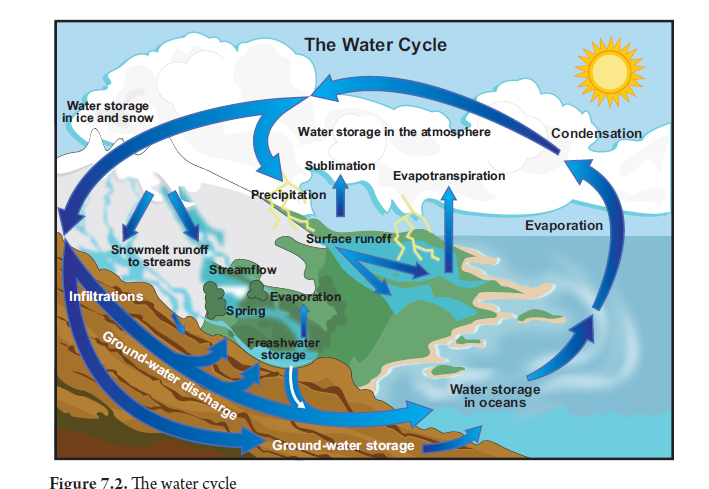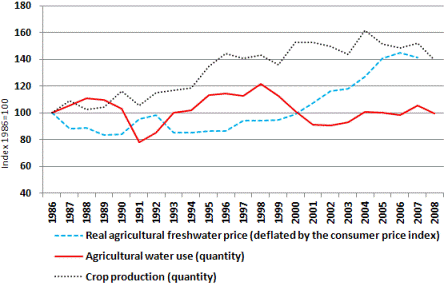Last Wednesday, I did a talk, Desalination as Adaptation as part of Bard College Center for Environmental Policy’s National Climate Seminar. The seminar, which is biweekly, was in the form of a conference call. Unfortunately, this format is completely new to me, and we had several technical difficulties. I apologize for the poor sound quality and regret that the talk had to end early. I will be posting some of the Q&A transcripts in the comments section below, since they are so hard to understand. I welcome your questions, hope that you will join the conversation in the comments section below.
I am including below a transcript of my talking points, and my answers to several questions emailed to me by students who were listening to the talk.
Transcript of talk:
Thanks to all of you. Before I start, let me say few words about my setting here. The timing of the seminar has small overlap with my regular climate change class. I have invited the students to hear the exchange during the seminar. As usual, many of them have conflicts and I have no idea how many will show up out of the 50 students take the class. To accommodate everybody, our IT guys helped me connect my iphone to the class audio system for everybody to hear. Two students, Desiree Dymond and Dylan Tobia are standing near me to warn me about the timing and help me in case I have difficulties in hearing your questions and comments.
I have asked Eban to be able to post the audio file on my blog so my students will be able to join all of you in the discussion.
I would like to thank you for hosting me and I would like also to thank Sonya Landau for suggesting to you my participation in this important seminar. Sonya is a graduate of Bard College and she now works in the public relations office LCG Communications with Linda Gross. In that capacity, Sonya is my right hand lady in publishing my blog and trying to help me spread the word to the furthest possible reach. Sonya has coordinated with Eban the poetic title – Desalination as Adaptation.
Friday morning I woke up with my usual breakfast and the New York Times. As usual, my wife got the first section and I got the rest. I started with the business section. One of the front-page articles started with the following intro: “The part of the past that you deem most relevant can be critical in determining your outlook for the future.” The article had absolutely nothing to do with the topic of this seminar but I have decided to go along with that sentiment.
I was born in Warsaw, Poland 3 months before the German invasion that started WWII. I was born to a Jewish family and I survived the war with my mother, spending the first three and a half years of my life in the Warsaw ghetto and the next two years in the Bergen-Belsen concentration camp. On February 13, 1945 I was saved by a unit of the American Army. After the War I went to Palestine (now Israel) where I grew up in boarding schools to follow in the army and University. I was trained as a scientist to try to quantify the physical environment with a focus on energy.
My present work is targeted at the modest objective of trying to assure long term survival of the planet as a supportive habitat of the human race. I define “long term” arbitrarily as 1000 years – a random number that has been cited as the time needed to develop the technology necessary to move from this planet to an alternative suitable planet in case we succeed in making this planet uninhabitable. So I define myself as a “quantitative survivalist.”
When I was born the global population was about 2 billion. Less than two years ago we crossed the marker of 7 billion – that’s an addition of 5 billion people in my lifetime. Over this period the average GDP/person in constant US$ has increased from around $2000 to about $8000. The GDP per person of the US is more than $50,000. The resources to support this growth came mainly from the physical environment. The price that we are paying is that we have become part of said physical environment.
The basic ingredients that characterize such survival are population, energy, food, water and natural resources.
The main life ingredients are described in terms of three cycles: The energy cycle, the carbon cycle and the water cycle. All three of these cycles are now being directly shaped by humans. Without human influence all three cycles balance nicely. Human influence drives all of them out of balance.
Climate change is caused mainly through the imbalances that we introduce in the carbon cycle through emission of greenhouse gases that impacts our energy balance. Most of the impact of these changes comes through the water cycle. The changes come in the form of sea level rise, extreme weather events and changes in the spatial and temporal pattern of precipitation.
There is a growing interest now to find exoplanets (Planets that are outside our solar system). There is even greater interest to find planets that can accommodate life. The interest is driven by scientific curiosity about our place in the Universe and, more pessimistically, attempts to find ways to save humanity in the case that we fail and make our planet uninhabitable. For a planet to be able to accommodate life, it must first accommodate liquid water on its surface and stay around long enough for the chemistry to take shape.
The water cycle is driven by solar energy that evaporates water into the atmosphere. The salt remains in the ocean. So the water cycle is a global gigantic desalination process with total recycling capabilities on a global scale – great system. The water vapor condenses in the atmosphere and joins the weather system. About 10% of the water returns to land in the form of rain or snow. The rain and snow eventually find their way back to the Ocean. With about 70% earth covered by Ocean, we will not run out of water – so long as the planet can stay habitable. Yet – increasingly we are running into severe shortage in the water that we can use – fresh water.
We use fresh water in agriculture to grow our food, in industry to drive our manufacturing and much of our energy needs, for drinking and for sanitation. As our numbers and our standard of living increase we need more fresh water. To satisfy our needs we borrow from storage pools and deplete our reservoirs. Water stress means that the storage pools are getting dry and that the natural water cycle cannot satisfy our needs.
What can we do?
- We can use less
- We can recycle
- We can add to the water cycle through technological desalination.
We are doing all three but some of us are doing more than others
Let me elaborate a bit on desalination. We can mimic the natural water cycle by doing artificial thermal desalination through enhanced evaporation and condensation. This is an energy intensive process. In a place like Saudi Arabia where energy is low cost and money is in abundance, this is the preferred method. The largest desalination plants are the thermal desalination plants in Saudi Arabia and other Persian Gulf countries. A much more efficient method is the reverse osmosis method.
If I take a cup of concentrated salt water and dump it into a container of fresh water, the salt will spread around very quickly through the entire sample, making a larger amount of diluted salt water (you can safely try it). If I want to do it in a controlled way I can put a membrane on the cup that can transport only water. What will happen is: water will move from the container to the cup in an attempt to equalize the concentration. The reason for that is one of the most basic laws of Physics called the 2nd law of thermodynamics. The process is called osmosis defined as the spontaneous net movement of solvent molecules through a partially permeable membrane into a region of higher solute concentration. To desalinate, I need to accomplish the reverse. To do that, I need to invest energy in the process. We know how to do that. The process is called reverse osmosis (RO). Let’s get some numbers:
From 1990 – 2008 global desalination capacity rose from 3.7 Billion US gallons/day to 17.5 Billion US gallons/day; a rise of more than 350% or an average of 20% per year.
In 2012 global desalination capacity reached 20 Billion US gallons/day.
Largest capacity RO plants (all around 120 million US gallons/day):
Largest capacity thermal desalination Plants:
- Saudi Arabia – 225 million US gallons/day. Under construction – SA – more than 250 million US gallons/day.
- California – the largest desalination facility (basically the only one) – near San-Diego (Carlsbad) to be operational in 2016 has a planned capacity of 50 million gallons/day with a construction time about 20 years.
Probably the most important thing that we can do is integrate all three water saving methods with the natural water cycle. Equally important, to adapt to the great spatial and temporal variability in the natural water cycle, we have to be able to adjust our water supplement to complement the natural variability.
Israel is doing just that. My last blog details some of the issues that Israel had to confront in doing that.
What is the global situation and why should we care? Let’s go through some numbers again: Average water use in the US is about 150 gallons/person. day – in Kenya it is 13. The largest water users everywhere are in agriculture to produce our food. 70% of Kenyans are employed in agriculture as compared to 1% of Americans.
Close to a billion people lack access to clean water and sanitation. Water recycling and desalination need resources that most countries can not afford. As the situations in many countries show, water doesn’t recognize borders and when people are desperate, security threats cross borders as well. What we do in the rich world should be addressed to solve global issues and not confined to our own backyards. In the rich world we should be willing to provide the technology and resources to address the global water stress through integration of saving, recycling and desalination.
Dear Professor Micha Tomkiewicz,
We are the graduate students from Bard CEP that asked you a couple questions during your National Climate Center talk. Our names are Emily and Sonam. Thank you again for joining our talk on Wednesday. We are currently writing our blog post as a response to the talk and we have a couple follow up questions for you. If you could answer a couple of these questions for us, whichever ones you wish to answer, it would be greatly appreciated.
Thanks,
Emily McCarthy and Tso Sonam
I understand this question is a bit of an extreme case, but bear with me for a moment: 2 earth system scientists, Timothy Lenton and Andrew Watson, wrote a book “Revolutions that Made the Earth” that argues that large changes in the amount of energy available to the biosphere have, in the past, always marked large transitions to the way the world works. They then consider that growing availability of solar and nuclear over coming centuries may mark the greatest new energy resources since and they suggest that the energy may be used the change the hydrologic cycle with massive desalination equipment, or a whole lot of other changes that this burst in energy could cause. In our graduate studies, we have seen that humans can completely change some earth cycles by our actions …
Our question is: at what amount of world-wide desalination, would you say that we should stop? It is good to think of where you would have to expanding the quantity of water being desalinated.
Great questions. I haven’t read Lenton & Watson’s book, though I probably should. From the title, I would expect it to cover something about Terraforming (the artificial formation of a planet with characteristics of the Earth) but your explanation makes it clear that is not the case. I would be a bit more comfortable answering your questions if I could remove the descriptive adjectives such as “large transitions,” “large changes,” and “massive desalination equipment,” but I can live with them.
Solar and nuclear are the two basic forms of energy that describe everything we are using. For example, energy forms such as wind, biofuels and hydropower all derive their energy from the sun. The fossil fuels from which we get our chemical energy originally derived their energy from photosynthetic organisms, which in turn derived their energy from the sun – the difference is that they did it millions of years ago. Tidal energy is probably the only form that cannot be characterized directly as either solar or nuclear.
Solar energy drives the water cycle. However, the water cycle operates on a global scale as part of the weather system, so we don’t always get the water when and where we need it. As our demand for fresh water grows, we need to supplement the water cycle. By this, I mean that when there is a short supply, such as in drought, we can draw from the desalinated supply, and when we have enough or more than enough (floods) from the natural cycle we don’t use the desalination facility. This necessarily means that we construct water systems that can move large quantities of water whenever –to wherever they are needed. This also requires an efficient water management system to ensure that the price that we pay for the water covers the cost and that the investment in the construction will be economically viable.
In last week’s blog I described the water management system in Israel, which approximately satisfies these requirements.
We need to expand desalination only to the most necessary level. That means that if we are good with the other management tools that we have such as efficient water use and recycling, our needs will be manageable.
What progress in particular would you like to see happening? Improved technology and research? or outreach and education? Or getting industry / investors/ government involved directly?
How do you feel about combined power and desalination plants?
Combined power and desalination plants are fine but they are not necessary. They each require specific settings and we should not have any issue moving either the energy or the water to wherever it’s most needed. The main argument against using desalination is the large amount of energy that we use to operate desalination plants. We are becoming much more energy efficient with the technology but we still need large amounts of energy. The only sustainable scenario here is to find an equally sustainable energy source. This of course would also contribute to the cost.
What do you think about trying to encourage industry to desalinate instead of cities?
The way it works now is that industry desalinates and not cities. In most places the cities don’t even initiate the desalination capabilities but instead contact the water authority to supply the water when needed at an agreed price.
Do you encourage other desalination processes other than the major families of reverse osmosis and distillation?
Right now, reverse osmosis is the leading technology – one that is being continuously improved. We don’t have too many options here because the process itself is a reverse osmosis process – the real issue is how we achieve it: through a thermal process (distillation) or through application of pressure.
Have you thought about a collaboration with a separation processes engineering class about a design project? They could perform a design of a theoretical plant and then perform an economic assessment of the investment. Desalination is often covered in these classes.
As I mentioned in my chat, I don’t work in the desalination industry and I am a bit old to switch jobs but there are plenty of very gifted engineers and scientists that are doing fine work.
Do you think private-public partnerships could be useful for desalination?
Public-private partnership is not only very useful, but absolutely necessary for desalination. I don’t see any way to run an efficient water management system without such a partnership.
Do you think desalination ever poses any environmental justice threats?
Which are the highest variable costs of operation, and which parts of the equipment are the most expensive (pressure vessel, membrane) in general?
The price of energy constitutes about 50% of the cost. We are making great strides in reducing membrane and vessel cost. These are a fixed price, since they do not scale with the amount of water that we desalinate, while the energy used does.
I sort of reversed the orders of the last two questions because the issue of environmental justice is probably the most challenging issue in the discussion. I will be delighted to continue the discussion starting with your opinion on how to address the environmental justice issue. It is important here to define the scale that we are taking about (global, country, individual?).
Take care and thank you.
As always, I welcome everyone’s feedback, questions and comments – I would love to continue the conversation with you in the comments section.
Update: the Bard CEP blog just posted about desalination and my talk: Desalination as Adaptation: Energy intensive, but sometimes necessary. I want to thank them again for inviting me to participate in their National Climate Seminar.







